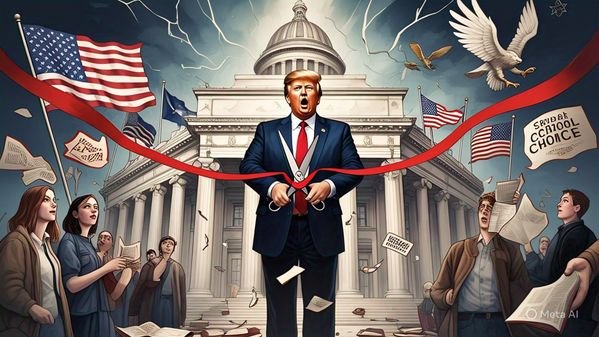Introduction:”What is the role of the US Department of Education?”
What is the role of the US Department of Education?While this has been a long-standing goal for many conservatives, fully shutting down the department would require an act of Congress, making it highly unlikely in the near term.
What Does the Department of Education Actually Do?
In fact, these responsibilities belong to individual states and local school districts.
Instead, the department’s key roles include:
- Overseeing federal student loan programs
- Administering Pell Grants for low-income college students
- Funding programs that support students with disabilities and those living in poverty
What Doesn’t the Department of Education Do?
What is the role of the US Department of Education?
The department does not:
- Run public schools
- Decide what is taught in classrooms
- Control local education budgets
Most decisions about school operations, policies, and curricula are handled at the state and local levels.
Budget and Workforce
What is the role of the US Department of Education?
The department employs approximately 4,400 people, making it the smallest of all cabinet-level departments.
Most public education funding in the U.S. actually comes from state and local governments, not the federal government.
In 2024, the U.S. spent over $857 billion on primary and secondary education, which averages $17,280 per student.

Can Trump Shut It Down on His Own?
What is the role of the US Department of Education?
No, Trump cannot unilaterally shut down the Department of Education.
- He would need Congressional approval, likely requiring a supermajority in the Senate (60 out of 100 votes).
- Republicans currently hold a slim majority, meaning they would need support from at least seven Democrats, which is politically unlikely.
- In the House of Representatives, previous attempts to abolish the department failed, with even some Republicans voting against the move.
Despite these hurdles, Trump is moving forward:
- His executive order instructs Education Secretary Linda McMahon to start the process of dismantling the department and transferring responsibilities to states and local governments.
- The order does not specify a timeline and is expected to face legal and logistical challenges.
What Happens to Student Loans?
What is the role of the US Department of Education?
Trump’s plan includes shifting the management of student loans to other agencies.
- He announced that the student loan portfolio would be immediately moved to the Small Business Administration (SBA).
- Trump’s administration has also reversed some of President Biden’s student debt relief measures.
Why Do Republicans Want to Abolish the Department?
What is the role of the US Department of Education?
Calls to dismantle the Department of Education have circulated among Republicans since its creation in 1979.
- Ronald Reagan’s 1980 campaign openly advocated for shutting it down.
- Conservatives generally argue that education should be state-controlled, not federally centralized.
More recently:
What is the role of the US Department of Education?
- Republicans have accused the department of promoting “woke” ideologies related to race, gender, and sexuality.
- Trump’s allies also support expanding school choice, allowing families to use public funds for private or religious schools.
Some conservatives believe that the department’s remaining responsibilities, such as civil rights enforcement, should be managed by other agencies like the Department of Justice.

✅ Positive Aspects of Dismantling the U.S. Department of Education
1. Increased Local Control
- States and local governments would have more freedom to design and control their own education systems without federal restrictions.
- Local authorities could better address community-specific educational needs.
2. Reduced Federal Bureaucracy
- Shutting down the department could lead to smaller government and reduced administrative costs at the federal level.
3. More School Choice
- Supports the expansion of school choice programs, potentially giving parents more freedom to select private, charter, or religious schools using public funds.
4. Less Federal Influence on Curriculum
- Eliminates concerns about “federal overreach” or the government promoting specific ideologies in schools.
❌ Negative Aspects of Dismantling the U.S. Department of Education
1. Loss of Federal Protections
- The department enforces civil rights laws in schools, including protections against discrimination based on race, gender, and disability. Removing this federal oversight may harm vulnerable students.
2. Potential Inequality
- Without federal funding and guidelines, poorer states and communities may struggle to provide quality education, increasing the gap between rich and poor areas.
3. Student Loan Disruption
- Transitioning the management of over $1.5 trillion in student loans to another agency could cause confusion, delays, or errors in loan servicing.
4. Uncertain Implementation
- The dismantling process could face legal challenges, delays, and operational breakdowns, potentially causing instability in national education programs like Pell Grants and special education support.
5. Loss of National Education Standards
- Without a federal body, national benchmarking and large-scale education quality assessments may become inconsistent or disappear entirely.
